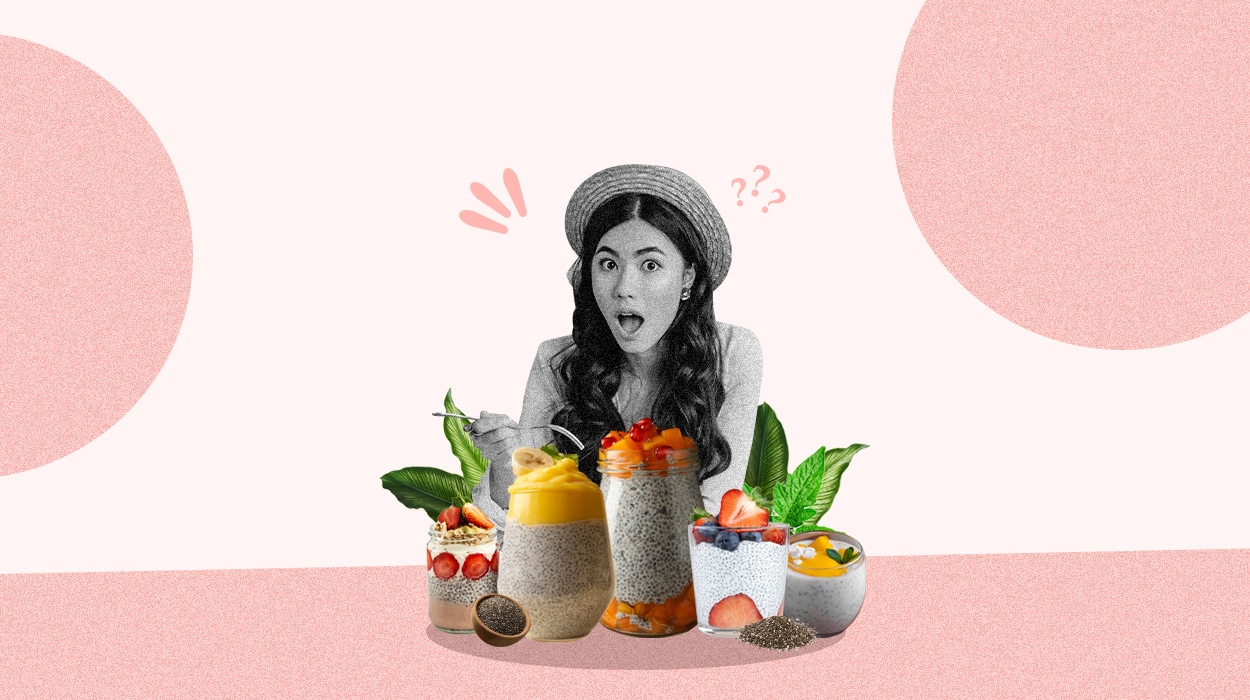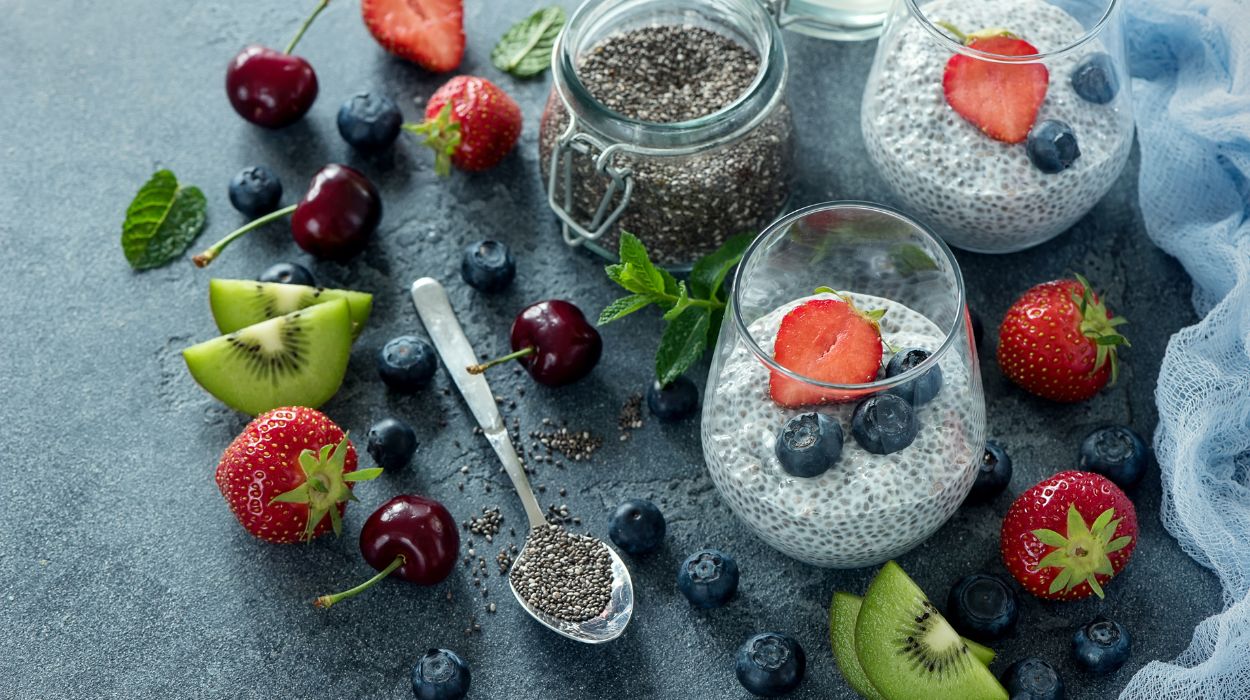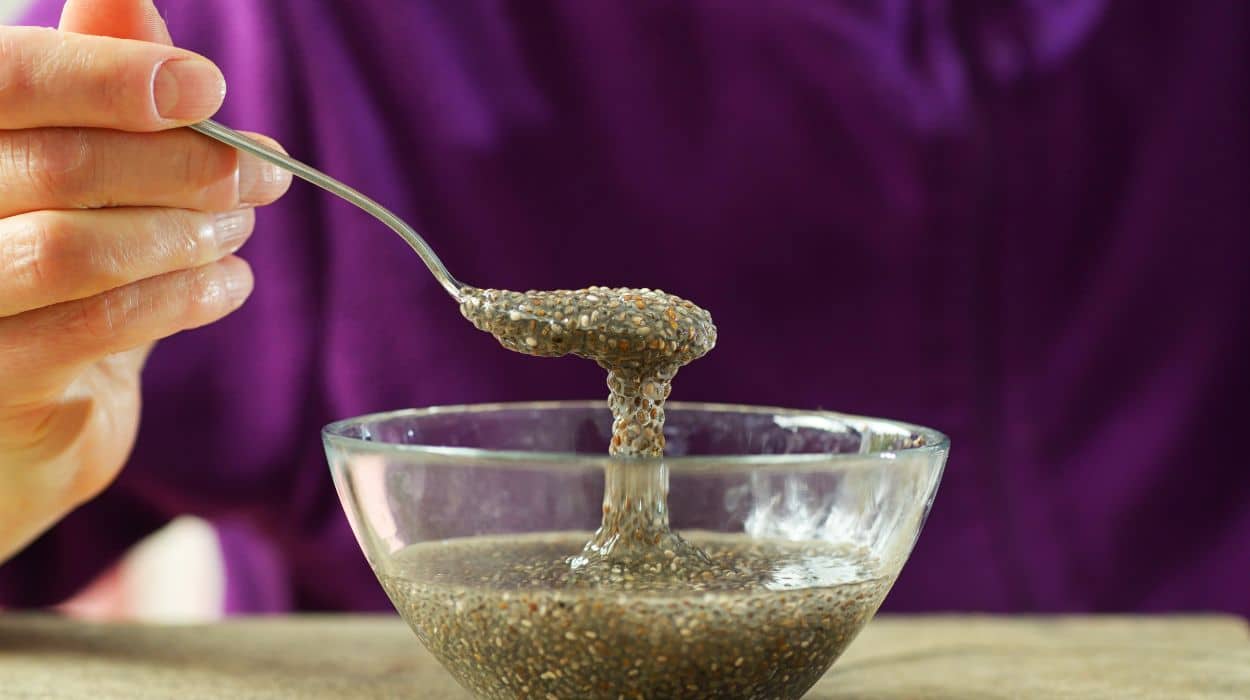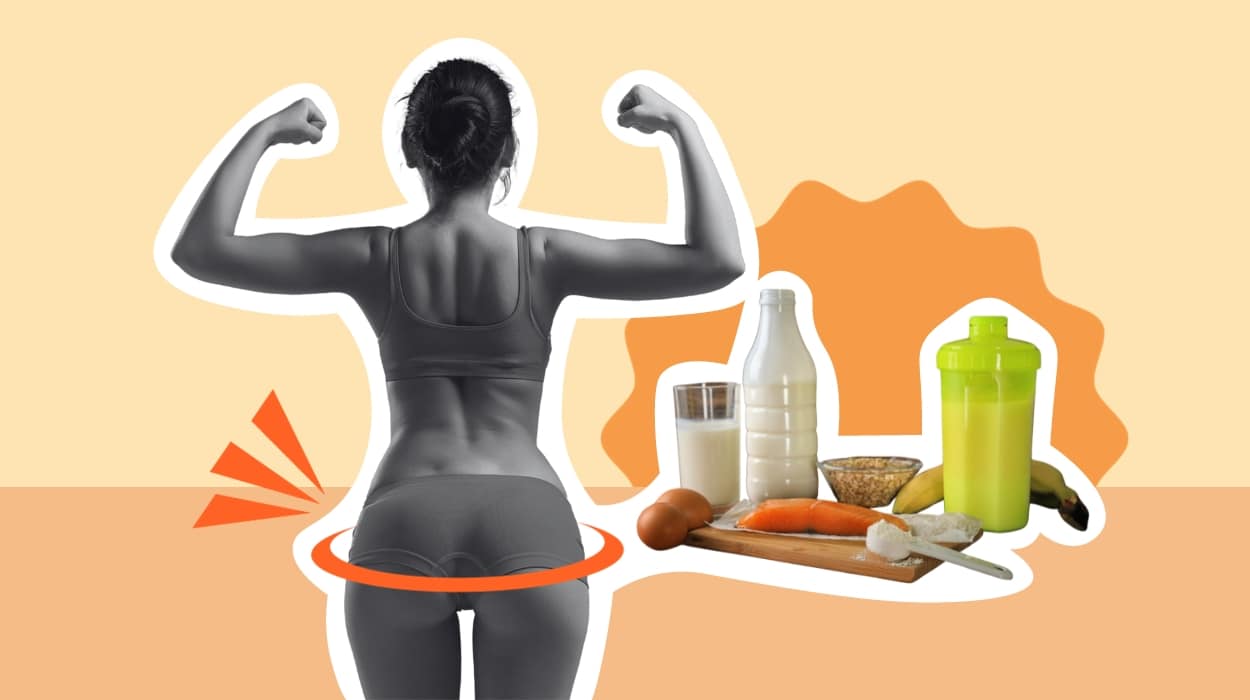How To Eat Chia Seeds 2024: Recipes & Buying Guide

First, it was a popular plant pet in the ’90s. Now, the chia plant (Salvia hispanica)—famous for the Chia Pet craze and franchise – is even more famous for its incredibly nutrient-rich and profoundly healthy seeds loaded with tons of wellness benefits.
People new to consuming chia seeds will quickly learn: that these seeds are a little different from other seeds when it comes to eating them! Thanks to their nutritional value, they’re well worth the effort of learning how to make simple and delicious snacks with them.
If you’re a newcomer to the world of chia seeds, keep reading to learn how to eat chia seeds—plus some easy recipes and a quick buying guide.
How To Eat Chia Seeds?
You can eat chia seeds raw like any other seed. However, their ability to “swell” up and become more like porridge or oatmeal plus their health benefits lend them interesting and unique approaches to eating them.
Just like flax seeds, whole chia seeds can also be ground or powdered and then added to foods, baked goods, and more. Still, the most popular and unique way to consume ground chia seeds is to soak them and then eat them: they “bulk up” to become more pudding-like, and can then be used as more specialized ingredients for certain snacks or preparations.
Different Ways To Eat Chia Seed Everyday
Let’s break down the ways that people tend to eat chia seeds and some popular ways to eat them:
- Raw. Just like eating flax seeds, people may sprinkle them atop salads, baked bread, soups, smoothies, and more.
- Powdered. This could be portioned out for even more dietary-focused consumption, not unlike a supplement. But it could also be added to—or used to thicken—sauces, marinades, gravies, salad dressings, soups, smoothies, or even baking batter.
- Ground. This is similar to powdering though the seed is not completely ground down. You can then incorporate ground chia into things like beadings or coatings (such as for meat) and plenty of other things.
- Soaked. This is the unique method for using each chia seed. The seeds are pre-soaked, allowed to “bulk up” and become gelatinous, and then consumed plain with sweetening or seasoning or other foods.
How To Consume Chia Seeds: 6 Delicious Chia Seeds Recipes
Chia Seed Jam
Making jam or jelly can be very time-consuming. While some people may find chia seeds a little odd or an “acquired taste” at first, one of their standout traits in the recipe world: you can make a very quick and effective jam-like spread with them!
Just choose your favorite fruit for jam: whether it be raspberries, strawberries, blueberries, blackberries, oranges, or something else. These can be thawed and softened first or cooked down into a soft form, then mixed with chia seeds to make a quick, easy, tasty, and nutritious jam.
Chia Seed Pudding

By far the most popular way to prepare chia seeds (in their soaked form), all it takes to prepare chia seed pudding is creatively soaking chia seeds. (Meaning: don’t just soak them in water.)
Recipes for chia pudding often involve soaking in some sort of plant-based milk: either almond milk, but also pea or oat milk is possible. Yogurt can also be added, too. This is then stirred briskly together while soaking until the chia seeds are softened and ready to eat in perfect healthy pudding-like form.
Chia Seed Pancakes or Chia Seed Waffles
Simple. Step 1: Choose your favorite pancake or waffle recipe. Step 2: Add chia seeds.
The beauty of this is you can consume chia seeds in any form in pancakes or waffles, depending on which approach you’d like to take. You can use ground or powdered chia seeds to thicken your batter (especially helpful for gluten-free recipes) or simply sprinkle the whole seeds into the batter, too (or do one better: sprinkle them atop your pancakes, too, when they’re off the griddle and ready).
If you don’t have your own pancake or waffle recipe you like.
Chia Seed Smoothie
If you have a favorite smoothie recipe, whisking in some chia seeds— raw, ground, or powdered— can add both texture and health benefits that uplift just about any fruit or flavor combo. Some great smoothie ingredient pairings with chia seeds include mango, banana, and yogurt (anything with a creamy palate).
It’s also incredibly easy to do…and impossible to do wrong, or in a way that tastes bad! The only caveat: just be sure not to add TOO many chia seeds.
Quick Chia Seed Breads
Quick bread like zucchini bread, cornbread, or pumpkin bread is highly welcoming to the flavors of chia seeds. They can be mixed right into the batter, in any form, to add extra fiber, nutrition, or thickness— or, while baking, they can be sprinkled on top of your bread for a little extra garnishing of nutrients (and beauty).
That said: there are some great recipes out there for yeast-rising bread that utilize chia seeds, too.
Try this pumpkin bread recipe using chia seeds from Better Homes and Gardens.
Chia Seed Oatmeal
Chia seeds and oatmeal almost seem made for each other. It also takes practically no work to make them go together perfectly well!
Just stir in your chia seeds once your boiled oatmeal has been removed off the stovetop, serve in your bowl, and wait for both to cool and let those chia seeds thicken. Or, if making instant oatmeal, mix chia seeds into your dry oats before adding your boiling water.
Try this Weight Watchers recipe using chia seeds, coconut, and pineapple with oatmeal.
Why Do People Eat Chia Seeds?

Chia seed nutrition is incredibly good for you. They have lots of health benefits and contain plenty of important nutrients and phytochemicals[1] that may be hard to find in other foods.
These include:
- Plant-based proteins
- Omega-3 fatty acids (ALA)
- Dietary fiber
- B vitamins and minerals
- Antioxidants
- Cardiovascular health benefits
- Gut health-boosting benefits
- Cancer protective benefits
- Immune boosting properties
- Helps regulate blood sugar
- Much more
While having many benefits to wellness, people are particularly drawn to chia seeds for their very high levels[2] of omega-3 fatty acids or ALAs.
What To Consider When Buying Chia Seeds
According to culinary experts, type and quality are things to consider when buying your chia seeds.
Make sure to buy seeds that are black, white, and spotted in appearance. If all the seeds look solid in color and brown, they’re not fully mature and may have less of the nutrients and wellness benefits that make chia so popular and sought after.
Conclusion
Chia seeds are not like your average seeds and for more than a few reasons.
For one: they may have higher levels of certain nutrients than many other types of culinary seeds (especially omega-3 fatty acids or ALAs). This makes them well worth eating…and well worth learning how to eat!
That said, chia seed’s unique ability to bulk up—or get “gelatinous” when soaked—makes for a very interesting food ingredient or snack, although challenging to some people in terms of taste, texture, and mouthfeel.
With help from this article’s simple recipes and tips, however, anyone can enjoy the health benefits of chia seeds in pleasant, easy, and tasty ways.
Frequently Asked Questions
No. Chia seeds can also be eaten whole or raw, partially ground, or completely ground into a powder and added to other foods like other types of seeds— such as flax seed, for example.
If you want “bulked-up” chia seeds for pudding, porridge, oatmeal, etc., the process of soaking is simple. Place your chia seeds in water and let them soak until they visibly bulk up: it’s that simple. You can also try some “al dente” – if they’re chewier or more “jello”-like upon taste, they’re ready.
You also don’t have to soak them in water. You can also soak them in milk or juice for extra flavors or nutrients.
Chia seeds don’t need to be soaked or in their “gelatinous” form to be enjoyed or even for people to experience some of their health benefits.
That said, soaked chia seeds do provide a few extra health benefits for the body in terms of fiber, digestive support, and some laxative support, in a pinch.
+ 2 sources
MIDSS adheres to strict procurement guidelines and relies on peer-reviewed studies, academic research institutes, and medical associations. We work mainly with peer-reviewed studies to ensure the accuracy of the information. We avoid the use of tertiary references. You can read about how we ensure the accuracy and timeliness of our content in our editorial process.
- Ashura Katunzi – Kilewela, Lilian Daniel Kaale, Kibazohi, O. and Rweyemamu, L. (2021). Nutritional, health benefits and usage of chia seeds (Salvia hispanica): A review. [online] ResearchGate. Available at: https://www.researchgate.net/publication/349672865_Nutritional_health_benefits_and_usage_of_chia_seeds_Salvia_hispanica_A_review.
- Suri, S., Jain Santosh, Passi and Jyoti Goyat (2019). CHIA SEED (SALVIA HISPANICA L.) -A NEW AGE FUNCTIONAL FOOD. [online] ResearchGate. Available at: https://www.researchgate.net/publication/335703285_CHIA_SEED_SALVIA_HISPANICA_L_-A_NEW_AGE_FUNCTIONAL_FOOD.
ABOUT THE AUTHOR





